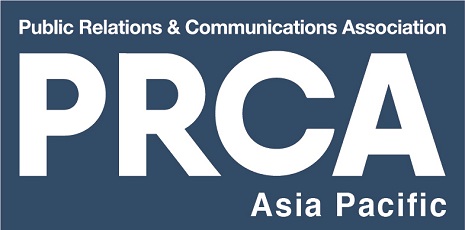2019 was an eventful year for brands across Southeast Asia. We saw better strategic planning by our clients and requests to drive integrated communications lead by digital and public relations. While big brands are now content publishers in their own right—with the editorial staff producing original content in-house, smaller brands have also jumped on the content publishing bandwagon.
In this feature, the practice and regional heads of PRecious Communications share insights on the trends which have started to shape the communications strategy of brands in 2020 and beyond.
Lars Voedisch, Founder and Managing Director, PRecious Communications

The essential criteria is to understand the business objective of marketing and communications. In the short term, sales and marketing teams will be more integrated to identify what kind of content works with their target audience and drive closures. Together, they can amplify what works or define areas of improvement whether it’s product, service or marketing.
The push to attract non-traditional media, such as industry-specific opinion leaders to get more bang for the buck and improve PR effectiveness, continues to be strong. New measurement tools now provide more opportunities to demonstrate the return on investment and the business value of digital marketing and public relations. Consumers and media are tired of the “one size fit all” approach. Brands will be required to work harder to differentiate themselves in a copycat environment and enable their audience to empathise with an otherwise faceless corporation. For example, in the current crisis where the World Health Organization has declared a global emergency over the spread of the Wuhan coronavirus, brands need to be more emphatic and focus on effectively share your message with employees, customers and other stakeholders.
Busakorn Srisongkhroh, Market Lead, PRecious Thailand

In a world of disinformation and fake news, with content on the boundaries of discourse grabbing eyeballs, traditional press in Thailand continues to stand a position of trust. Brands and consumers alike genuinely understand and appreciate the value of the fourth estate. However, with content consumption increasingly moving online, marketers in Thailand are making more pronounced investments in areas such as influencer marketing with micro-influencer and specialist influencer engagement programmes.
What will revolutionise the external communications paradigm in the market would be the use of actionable insights to drive data-led integrated PR campaigns, define optimal channels and work with the right set of influencers. It’s still early days for a market that is in transition, but there are positive signs already.
Danielle Chow, Deputy Head, PRecious B2C

With traditional media houses struggling to stay afloat and workforce getting leaner, there will be greater emphasis on media relationships. There will be an increased focus on content, greater dialogue between PR practitioners and journalists to craft stories, creating in-depth quality features that place the consumer at the centre of the story.
At the same time, with consumers becoming savvier, PR practitioners will need to innovate and be more creative in the experiences and campaigns they build for a brand’s target audiences. There will be greater use of technologies, newer platforms, and diverse channels. On the client-side, there will be more emphasis on conversions. Historically, PR used to sit at the top of the sales funnel, focused on awareness and interest generation. Moving forward, PR will also have to deploy different methods to move the needle further down the funnel.
Joyce Hutapea, Senior Manager, PRecious Indonesia

The Indonesia PR landscape is undergoing tectonic shifts, quickly gravitating towards leveraging the reach of digital media, combining it with the power of traditional media. The focus is now rightly on local in-market relevance, driving measurable brand outcomes, and building lasting relationships. Traditional media is also making the transition towards building robust digital platforms for better story-telling, faster time-to-news and more active engagement.
In this constantly-evolving landscape, it is imperative for PR practitioners in Indonesia to right-skill themselves, think more strategic and long-term while being agile to disruptive changes around them. We need to consider the changing landscape where even the consumer can be a ‘journalist’ and move to a customer-centric approach. In that sense, the traditional media now consumes news created by citizen journalists. These trends are reshaping the future of media, and PR practitioners need to add value to the trifecta of media, audiences, and brands.
Melinda Ilagan, Practice Head, PRecious B2B

Not too long ago, content marketing and social media agencies mushroomed in Singapore offering their services as an ‘antidote’ to the dwindling number of media. We saw the rise of video agencies, vloggers/ bloggers a.k.a. influencers, and now, podcast producers. Public Relations with considerably fewer journalists (almost without) meant PR firms having to transform into mega-agencies that delivered diversified engagement services.
Only agencies that dare to evolve are thriving. Tech-savvy agencies that can attract and retain talents with the ever-relevant traditional PR skills and are bold enough to embrace new ways of engagement will be able to add real value to brands of the future.
Neil Fraser, Market Lead, PRecious Malaysia

Malaysia’s PR landscape continues to evolve towards a communications marketing model, with agencies that offer fully integrated campaigns on the rise. This on-going development should be observed alongside the nation’s drive toward the ‘new economy’ or ‘digital economy,’ with Government investment fuelling SMEs, in particular, to embrace the digital revolution, offering new opportunities for the nation’s PR agencies.
Those truly holistic agencies nimble enough to adapt to a radically different clientele – where value-for-money, expediency and tangible business benefits are essential – will prove formidable over the next 2-5 years. Accountability will play a big part with a shift from traditional PR metrics – such as AVE – to boosting engagement, increasing leads and contributing to a company’s bottom line.
Prayaank Gupta, Head of Growth & Innovation at PRecious Communications

The challenge with our industry, arguably, is that we are terrible at articulating our value proposition to increasingly sophisticated, performance-driven marketers. Part of this is by design – it is easier to package consulting fees when it’s not as easily understood, making it harder to build it as an in-house capability or to commoditise. In the short term, agency professionals will need to become more sophisticated at what we are good at, being a channel to communicate messages between our clients and their stakeholders, managing perception of their brand towards a mutual benefit.
We also need to demystify the fact that traditional PR is not a direct demand generation tool that drives leads to a brand’s CRM systems. Naturally, more integrated agencies could then jump at this opportunity to position other service offerings catered to mid and bottom-funnel sales activities. In the long term, agencies will need to work towards alignment between the type of work it does for clients with shared values – not everyone wants to be shilling something which they do not believe in.
Wendy Tan, Director – PRecious Integrated Communications

A robust integrated communications approach is only as effective as its content. Good content takes into consideration the consumer’s immediate goals or general interests, but great content appeals to their desire, aspirations, and emotions. Thus, great content can be the path to purpose for the consumer – sustained growth and top of mind recall for a brand. With communication vectors and channels evolving, the role of PR practitioners is to craft compelling content that creates awareness, drive adoption, build advocacy and more importantly influence purchase decisions that propels business and brand goals.
This post was originally published on PRecious Communications website.

